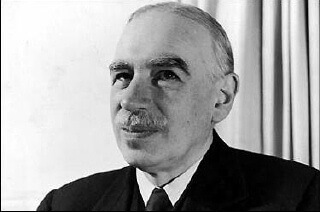
John Maynard Keynes was one of the most famous economists and economic theorists of all time. He invented some theories that still govern modern economics and his ideas can be found almost everywhere in the free market.
1. Landscape of 20th Century Economic Policy
Keynes’ philosophies and economic ideas have shaped the landscape of 20th century economic policy. He grew up in a privileged society and his father, John Neville Keynes was a Cambridge economist. Because of his own choices and his father’s career, he spent his career among England’s wealthy and elite.
2. The Economic Consequences of Peace
One of Keynes’ best known works was The Economic Consequences of Peace which was a critique of the Versailles Peace Conference and everything that happened there. The work was written in 1919, shortly after World War I. His prediction was that the economic situation in Europe would become very unstable because of the reparations that were demanded of Germany and the severity of the punishment. His prediction was correct and the result was economic instability.
3. General Theory of Employment, Interest and Money
His General Theory of Employment, Interest and Money, written in 1936, made him the most influential and famous economist since Adam Smith.
4. Influential Theories
Keynes believed that governments should sometimes intervene in economics to maintain balance. He also believed that the government should manage economics but still allow a free market to exist. This went against the theories of Adam Smith, known as laissez-faire economics; theories which have influenced international and local policies of governments worldwide. Many believe that a combination of government regulation and free market leads to the best economic situation. Some would even consider it controlled or managed chaos. Let others do what they want as long as it doesn’t interfere or treat anyone else unfairly.
5. Personal Life
Keynes was wealthy himself and a notable patron of the arts. He married Lydia Lopokova, who was a famous ballerina in 1925. They were married until Keynes died and then Lopokova lived until 1981. He normally went by the name of Maynard instead of John which was actually his first name. He became Baron Keynes of Tilton when he was awarded a peerage in 1942.
6. Fellow at King’s College
Early in his career, Keynes was elected a fellow at King’s College and, in 1911, notwithstanding his youth he was selected as editor of The Economic Journal. It was published by the Royal Economic Society and was also one of the leading professional journals for economics.
7. Indian Currency and Finance
Keynes’ first book, Indian Currency and Finance, was published in 1913. It was the result of his studies in India at the very beginning of his studies and during his schooling. The book was published shortly after his appointment to the Royal Commission on Indian Currency and Finance. Many economists and other theorists say that it is the best book in the English language about the gold exchange standard.
8. Role in The Treasury
Keynes played an important role in the Treasury during both World Wars. When World War I broke out, he entered the Treasury as an unofficial assistant. He wasn’t paid for his services but still played an important role in the management of inter-Allied finances. After the war ended, he went to the Paris Conference as a representative for the Treasury.
9. Treatise on Probability
John Maynard Keynes’ Treatise on Probability was published in 1921. In the treatise, he uprooted the theory of probability and inserted a logical-relationist theory of probability instead. His book caused another theorist to write a rebuttal on the subjective theory of probability.
10. A Rift Between Generations
The philosophies of Keynes caused a rift of sorts between the generations on economic theories. The younger generation clung to the newer and fresher ideas of Keynes. The older generation condemned the ideas of Keynes and said that they would never work in reality but only in theory.

Leave a Reply